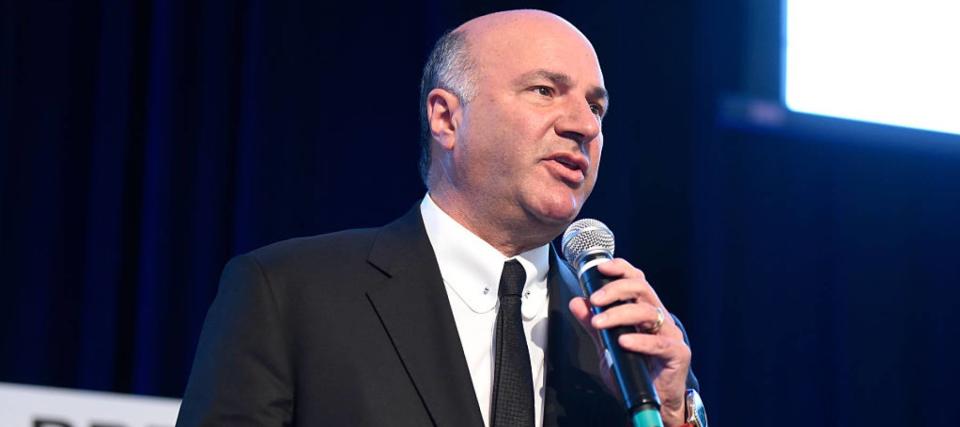'Do not invest in your brother's restaurant': 'Shark Tank' star Kevin O'Leary explains how to live off $500K and 'do nothing else to make money' — but is it feasible?

How much money is enough? According to entrepreneur Kevin O’Leary, it really depends on your lifestyle and how you invest your funds.
“Do not invest in your brother’s restaurant,” he warns in an interview posted to his official YouTube channel. “Or a bowling alley, or a bar, or all that other crap. You’ll lose your money.”
About one in five private sector businesses in the U.S. fail within the first year, and 48.4% have to shut shop in five years, according to LendingTree's analysis of Bureau of Labor Statistics (BLS) data. After a decade, over 65% of businesses have failed.
Instead, the "Shark Tank" star believes a person could survive relatively comfortably on just $500,000 in the bank and “do nothing else to make money” — provided that $500,000 is invested correctly.
Don’t miss
Commercial real estate has outperformed the S&P 500 over 25 years. Here's how to diversify your portfolio without the headache of being a landlord
Take control of your finances in 2024: 5 money moves to start the new year off strong
The US dollar has lost 87% of its purchasing power since 1971 — invest in this stable asset before you lose your retirement fund
Here’s a closer look at his thesis and whether it’s actually realistic for most people.
O’Leary’s thesis
Half a million dollars doesn’t seem like a lot of money these days. In fact, it’s less than half the amount Americans say they need to retire. A Northwestern Mutual study found that U.S. adults were on average targeting $1.3 million to retire comfortably. So, O’Leary’s number already sounds paltry.
Nevertheless, he believes the right investment can deliver a reasonable retirement. A typical saver, he says, can generate 5% returns in fixed income securities with “very little risk” or between 8.5% and 9% “if you put some of it in equities and are willing to ride the volatility.”
Those numbers certainly look realistic. The yield on a 10-year U.S. Treasury bond is close to 4%, while the S&P has delivered average annual returns of around 11% over the last 40 years, assuming you reinvested all your dividends.
But living off 4% yield on half a million wouldn’t be easy. That translates to just $20,000 in annual income, about a quarter of which would go towards medical expenses alone as you got older, according to a study by RBC Wealth Management.
Read more: Find out how to save up to $820 annually on car insurance and get the best rates possible
Even the upper-end of O’Leary’s assumptions falls short. Assuming a person deploys $500,000 in a portfolio made up of stocks and bonds for 9% annual returns, they would earn less than $50,000 a year. That’s not enough to retire in most U.S. states, according to recent analysis by GOBankingRates.
In 2023, the cheapest state to retire was Mississippi, where a retiree needed $55,074 annually to live comfortably. Hawaii was the most expensive state to retire, where the bar was set at an eye-watering $121,228 per year.
Bear in mind, we haven’t even considered other factors such as inflation, expense ratios, or taxes, and the stock market’s past performance is no guarantee of future results.
Simply put, O’Leary’s proposal isn't realistic for the vast majority of people.
Better targets
If the goal is to be comfortable in retirement, the “4% rule” is a popular guideline. It says that retirees can safely withdraw 4% from their retirement funds every year over a period of 30 years. Every year after the first year they would have to adjust the dollar amount to account for inflation. Created by financial adviser Bill Bengen, it’s based on analysis of historical returns and volatility of bonds and stocks. It's assumed retirees won't oulive their money if they spend this way.
The average retiree aged 65 and older spends $52,141 every year, according to data from the Bureau of Labor Statistics (BLS).
Let’s round that number up for safety. To generate $53,000 in retirement based on a 4% withdrawal rate, you would need at least $1.3 million. If you had $500,000 saved for retirement, like O'Leary said, and you withdrew 4% every year for 30 years, you would safely be able to spend just $20,000 per year.
For a genuinely comfortable retirement, the million-dollar figure seems much more realistic.
What to read next
This Pennsylvania trio bought a $100K abandoned school and turned it into a 31-unit apartment building — how to invest in real estate without all the heavy lifting
Jeff Bezos and Oprah Winfrey invest in this asset to keep their wealth safe — you may want to do the same in 2024
Rising prices are throwing off Americans' retirement plans — here’s how to get your savings back on track
This article provides information only and should not be construed as advice. It is provided without warranty of any kind.

 Yahoo Finance
Yahoo Finance 